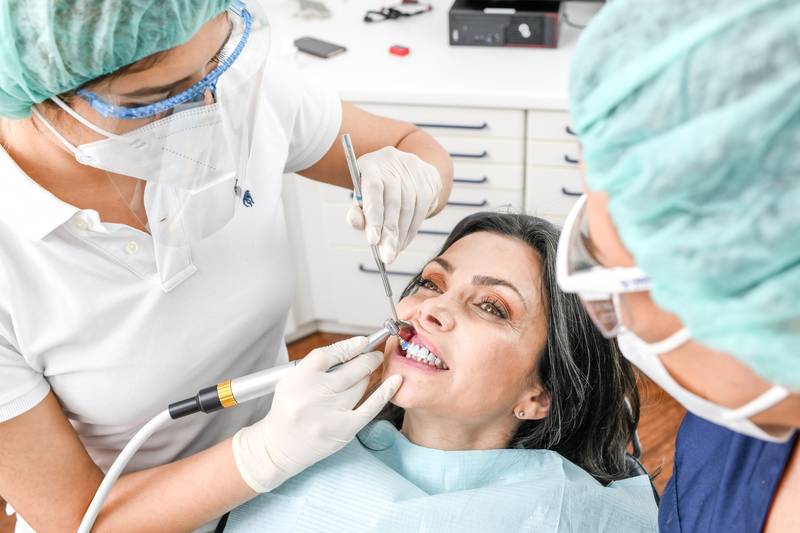From 26 May 2020 it becomes serious: after a transition period of three years, the MDR will apply immediately in the Member States of the EU. The transition period appeared to be sufficient at the outset to meet the high demands. Since then, however, it is virtually certain that implementation will only be successful in some areas because numerous necessary measures have not yet been put into practice or in some cases not even introduced. A bumpy start awaits all involved.
Question: What are the reasons why timely implementation of the MDR will either be unsuccessful or delayed?
Pace: Certification of medical devices is carried out by notified bodies. At times there were over 80 of these in the EU. Up to now, only 44 have submitted an application for designation under the MDR. Firstly, this is far too few. To date, only nine bodies are notified. The EU Commission has obviously miscalculated in this case. It had assumed that the designation process, which the notified bodies must go through, would be speedier. As the requirements on the notified bodies were significantly intensified, however, the process takes considerably more time. Just how much the Commission incorrectly assessed the development is shown by their communication mid-September 2019 that it should certainly be possible to notify approximately 20 bodies by the end of 2019.
The second implementation problem is the legal acts, guidelines, standards or common specifications that are still lacking. Over 40 legal acts are possible according to the MDR; the Commission has only achieved three up until now. With these instruments implementation would have been considerably easier to provide common definitions and in particular interpretation aids.
The third point of criticism is the Eudamed database. The EU Commission has always been convinced that it could launch Eudamed on schedule and in full by May 2020. Reservations from the industry, that from a practical point of view implementation would not be possible in the prescribed period, were largely disregarded. It was not until October 2019 that the Commission pulled the emergency cord and postponed full functionality of Eudamed to May 2022 at the earliest.
Question: The requirements not only increase on notified bodies but also on manufacturers. What exactly are the key new requirements?
Pace: They relate to Art. 10 MDR. To summarise it briefly: whether risk management, clinical evaluation, technical documentation, market monitoring after putting on the market amongst other things: the amount of documentation will be considerably more extensive, it will probably more than double.
Question: Do you have any empirical data on the state of preparations for MDR with manufacturers of dental medical devices?
Pace: According to the information we have, manufacturers are very well prepared. As early as 2017 the VDDI analysed the necessary steps in its committees and subsequently processed the individual tasks. Together with manufacturers’ associations in the working group of the medical-technology manufacturers, we have conducted a range of information events and held discussions with representatives of the EU at all levels. It is pleasing to note that the Federal Ministry of Health has also addressed the issue and exerted its influence in Brussels for an extension of the deadline.
As things stand today the majority of implementation steps are complete, naturally only insofar as authorities and notified bodies cooperate. Many companies have extended existing certificates until 2023, 2024 still according to the applicable regulations of Directive 93/42, while others will already be audited during the few weeks after the MDR. New personnel have been employed for preparation of these measures who are almost exclusively involved with the documentation demands.
Certainly there will also be individual cases in which the processes are more problematic. It will be particularly difficult for companies whose notified bodies have no longer applied for an MDR notification. For these companies it is now almost impossible to find a new notified body which could complete new orders in time.
Question: The reason behind all the high requirements and the great effort, however, is the primary objective described in the MDR to make products safer and improve patient protection. Is it likely that this objective will be achieved with these measures?
Pace: Up to now, dental medical devices have had more of a low or medium risk. This is demonstrated by the low number of reports about product recalls or mandatory problem-reporting incidents. Our products were rarely affected. To what extent safety will increase in future, however, remains to be seen. Basically, dental medical devices have already been safe for a long time and we doubt that safe products can be made even safer by an enormously high amount of documentation.
Question: Could it result in bottlenecks in the market, if manufacturers’ products cannot be tested according to MDR regulations in time due to limited capacities at the notified bodies?
Pace: The legislators have sensibly incorporated a transition arrangement in Art. 120 MDR. All certificates, which manufacturers already possess, apply until the expiry date stated in the certificate. Manufacturers can also still perform audits according to applicable law until the 26-05-2020 audit, meaning these valid certificates also apply until the expiry date and until 26-05-2024 at the latest.
Question: With the second corrigendum published on 27-12-2019 in the EU Official Journal, Class 1 products have also been included in the transition arrangement. What does this regulation mean for industry and users?
Pace: There are many products, which still belong to Class 1 under current law, but which must be classed higher in future under the MDR and will therefore require involvement of a notified body. This includes, e.g. reusable instruments or also the large number of products such as impression materials which contain nanomaterial. These products would have required a valid MDR certificate by 26-05-2020. However, this will not be feasible due to the lack of notified bodies and the products would no longer have been marketable from May 2020. In this respect the EU Commission and EU Member States had to take action and they did so due to the massive opposition of the medical-technology industry associations.
Question: As there are still many unresolved issues and complete implementation of the MDR by 26.05.2020 seems impossible, would it not be sensible to extend the transition period significantly beyond the deadline?
Pace: For all involved, whether Member States, EU Commission, notified bodies, authorities, industry or users, an extension of the transition period would not only be very sensible but absolutely necessary. Smooth implementation of the MDR would only be possible once all conditions have been met (adequate number of notified bodies, delegated legal acts, common specifications, guidelines for implementation, Eudamed fully functional). But the policy has made it abundantly clear that there is no intention of extending the transition period. A bumpy start is therefore certain.
Question: Are there specific issues in the implementation of the MDR that are of particular importance for the dental industry?
Pace: Many manufacturers of materials do not yet know how their products should be classified in future. If the products contain nanomaterials, they can be Class IIa, IIb or III. Classification depends on the internal exposure of the product. This can be “negligible, minor, moderate or major”. No one knows yet how these terms will be defined and how demarcation to the next higher classification should be made. The EU Commission should develop a guideline for this, but whether this can resolve the numerous problems connected with this regulation is highly questionable. Manufacturers require this specific information urgently to ensure planning security in time, as many managerial decisions depend upon us being aware of what is heading in our direction.
Question: Users, meaning dentists and dental laboratories, are also affected by implementation of the MDR. What challenges must they overcome?
Pace: The requirements on users will also be greater. For dental laboratories introduction of a risk management system and quality management is mandatory. Provided they have already coordinated their processes to the revised Standard DIN EN ISO 13485:2016, generally speaking the requirements of the MDR are met. The Association of German Dental Technicians’ Guild (VDZI, Verband Deutscher Zahntechniker-Innungen) developed recommendations for action for implementation of the MDR. This mainly deals with the risk management to be introduced by laboratories, a plan for monitoring after placing on the market, a system for recording incidents, reporting of serious incidents and recalls, and the appointment of a responsible person for ensuring compliance with the regulatory requirements.
Question: Dental laboratories have profited up until now from a special regulation in the German Medical Devices Act. Manufacturers were allowed to put the CE mark on intermediary products intended for fabricating custom-made products. The MPG (Medical Devices Act) no longer applies from 26-05-2020 onwards and there is no comparable regulation in the MDR. Does this have any consequences?
Pace: If this option were no longer to exist, the products provided by the manufacturer would be non-certificated intermediary products, the laboratory would then become the manufacturer according to the MDR with all the requirements that a manufacturer must meet. Many small laboratories would be overstretched by these requirements. The German Ministry of Health has, however, already made clear through a public statement by Secretary of State Gebhardt that it wants to adhere to the existing regulation even without MPG. At EU level the MDCG (Medical Device Coordination Group) will concentrate on relevant implementation, possibly in the form of a guideline.
Question: In times of increasing possibilities for fabricating products digitally, e.g. using CAD/CAM, the question arises as to whether products fabricated in the laboratory or dental practice should be regarded as series-produced or custom-made?
Pace: The MDR defines the term “custom-made” in Article 2 Paragraph 3. A medical device is considered custom-made if it is fabricated specifically for an individually named patient, complies with specific design features and the desired therapeutic benefits take effect. An essential feature of a custom-made device is fabrication of the product based on a prescription by a qualified professional (e.g. dentist). Whether fabrication is completed manually or using an industrial process is no longer relevant. The VDDI has comprehensively discussed this problem in its policy document entitled “About dealing with custom-made devices according to the MDR”. The EU Commission has also expressed its opinion on the subject and described the fabrication method as “irrelevant”.
Question: Will dentists also have extended obligations in future?
Pace: Assuming dentists (and also dental laboratories) only fabricate custom-made devices, they are exempt from the CE mark requirement and therefore also from obligations required of manufacturers. However, they must invariably enclose the information listed in Annex XIII regarding conformity of the custom-made device. Up until now, this was only required for Class IIa and higher custom-made devices.
Question: Manufacturers are increasingly being asked by dental practices and laboratories, whether products which they have purchased and stored, can still be used.
Pace: It basically applies that all products, which users already use or are already in their stock or store, are not affected by the new regulations. Furthermore, medical devices purchased up to 25-05-2025 may be placed on the market according to both the regulations of the MDD and the MDR. Medical devices, purchased after 26-05-2025, may only be placed on the market in accordance with the MDR. In all cases any expiry date should, of course, be complied with.
Question: The additional financial burden on manufacturers is enormous. Higher costs due to additional personnel, considerably higher fees charged by notified bodies: Must we assume that manufacturers will withdraw products from the market?
Pace: Nobody can answer this question at the moment. Every company develops its own business models; this process includes evaluating to what extent manufacturing specific products is still justifiable from an economic point of view. Products with a low turnover and high regulatory requirements are unquestionably subject to review as a priority. It is certain, however, that the past product diversity and thus also product choice will be reduced.
03/2020



